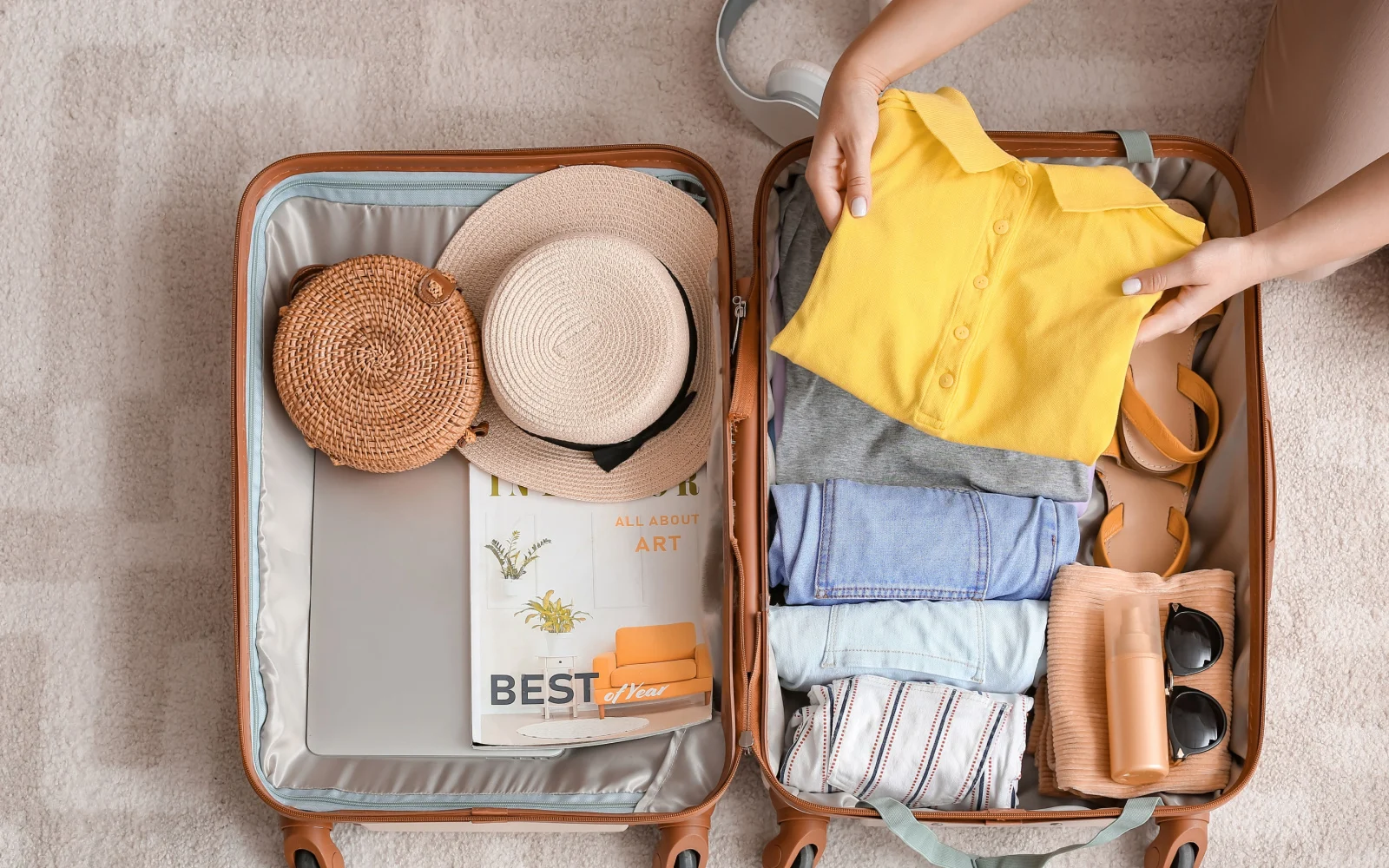My favorite thing to do when I fly is not stress when I fly. Ideally, the experience is enjoyable – a time to catch up on books, magazines, flicks, or even some light work. Although, if you absolutely hate flying, well, you’re certainly not alone.
The Hill reports that “Fear of flying afflicts as much as 40 percent of the U.S. population” but “Only about 5 percent of Americans have aviophobia so severe that they cannot fly.”
However, “The earthbound population rises with every new aviation horror story, like the Lufthansa Airbus A330 that went into free-fall over Tennessee” back in early 2023.
Should that discourage people who get a little nervous about air travel (*raises hand*)? Of course not: flying is very safe.
Indeed, says the International Air Transport Association, “on average, a person would have to travel by air every day for 16,581 years to experience a 100% fatal accident.”
So if you live to 17,000 years old… watch out. If not, you’re in the clear. But still, you want to make your flight as stress-free as possible, and I’ve found that bringing a well-packed carry-on does just that.
Whether you’re headed to far-flung Europe or neighborly Costa Rica, knowing how to pack your in-cabin travel bag can make all the difference to how enjoyable your flight is.
Luckily, we’re here to guide you through it.
Basic Travel Items Are the Bulk of Your Carry-on
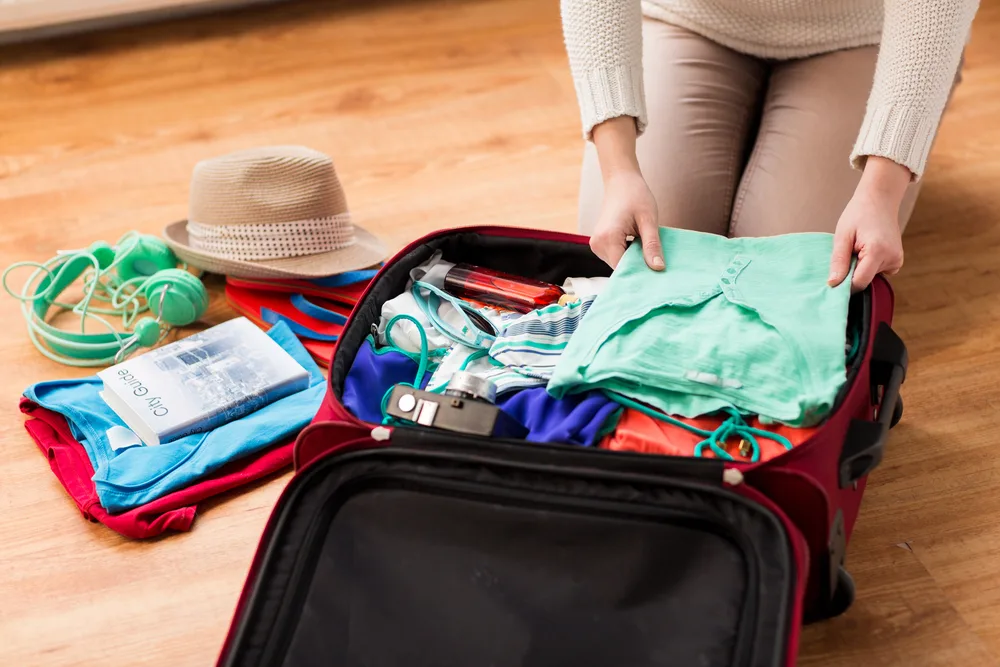
Ground Picture/Shutterstock
My goal when packing a carry-on bag is to make sure I have everything I need no matter what happens to any luggage I may have in the hold.
True, I try to avoid having any luggage in the hold, but I can’t always get away with that. So making sure my carry-on could theoretically support me for an entire trip, plus a few purchased items, is always my goal.
Here are the basics.
Clothing
I’m a huge proponent of the capsule wardrobe. While you could spend eons diving into the complexities of this trendy idea, it hinges on a few essential rules.
First, make sure everything goes with everything else. Your tops should all match your bottoms so that you’re free to wear whatever works best for the weather, activities, and personal dictates of fashion.
Second, pack a set limit of pieces. Roughly, you should bring:
- Two to three each of tops and bottoms, whether those constitute heavy fleece-lined leggings or tiny beach shorts
- One heavy top layer for winter, such as a chunky sweater
- One coat
- Two pairs of shoes, one for nice and one for walking or hiking
By mixing and matching, you can be sure you’re minimizing the amount of space clothes will take up in your carry-on. This makes it easier to move through the airport and get through security.
It also means you can fit an entire week’s worth of clothing (or a month’s worth, if you’re laundry-savvy) in your carry-on. That protects you from falling victim to the Gods Of the Baggage Carousels, which aren’t always benevolent.
Note that if you can’t fit a larger pair of shoes (say, hiking boots) into your bag, then you might want to get travel insurance that covers lost luggage. A nice pair of boots can easily cost more than $100 if not $200, and you want to be able to recoup it.
Undergarments
Plan to bring as many socks, undies, and other sundries as you normally would. A recommended packing list by season looks like:
- Winter: Two bras, if you wear them (one nice and one sporty), seven pairs of socks, seven pairs of undies, long underwear, and a pair of wool socks to double up
- Summer: The same two bras, seven socks, and seven undies, plus slip for light sundresses
Obviously, depending on your gender, you will not need all of the above items, so bring what pertains to you.
Swimsuits and Specialized Items
Swimsuits aren’t just for hot countries. Many people enjoy traveling to lodges or hotels that have an indoor swimming pool, which is a nice place to take a dip when the outside world feels a little too cold or uninviting.
Suffice it to say, if you are bringing swim gear, make sure it goes into your carry-on. It can be very expensive to buy swimsuits abroad, especially if you’re staying in a resort or a tourist town. For this reason, you should also bring two suits in case something happens to one.
If you wear trunks and wear swim trunks, you might want to consider a swim liner. This dramatically reduces irritation from uncomfortable fabrics, even when exposed to chlorine or seawater.
Personal Items Are Just As Important
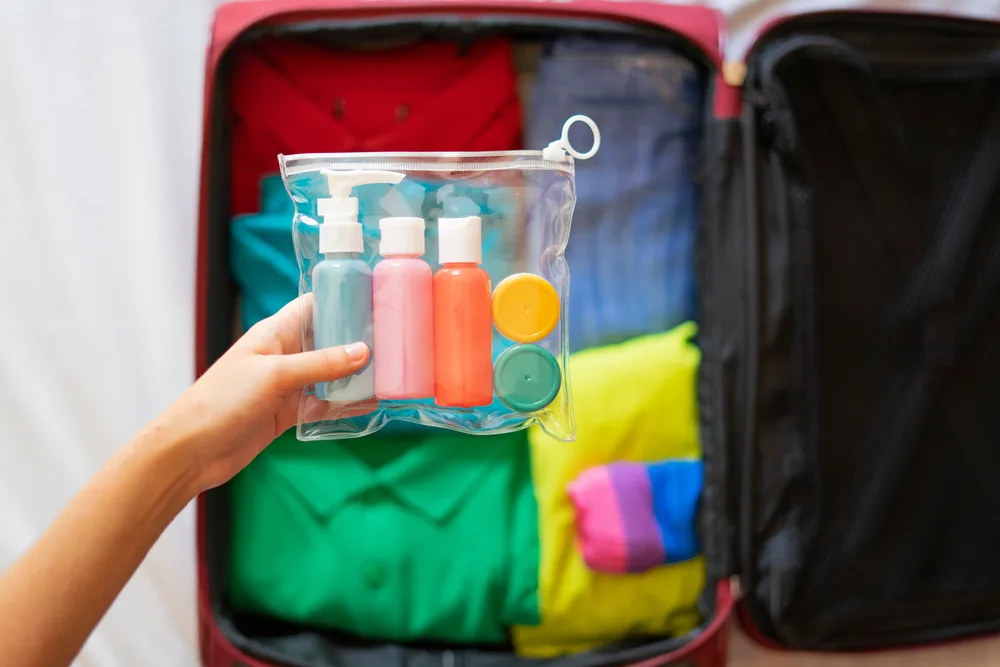
munyi.imagery/Shutterstock
Personal items should also make it into your carry-on bag. Like shoes or swimsuits, they can also be quite expensive to replace. Let’s explore the main must-haves.
Toiletries
Most people want their toiletries available at all points in transit. You never know what might happen, so even on short hops, make sure you have the necessities.
Bring toothpaste, a toothbrush, deodorant, and your non-negotiable makeup items with you in your carry-on or the backpack/purse you stow under the seat in front of you. You may also wish for a hairbrush, detangler, or face wipes.
Use unscented products when traveling. Some people have serious allergies to perfumes and other scented goods and can become sick (and cranky with you) on flights.
If you wear expensive makeup, always bring it with you into the cabin. If you must put it in your checked baggage, opt for sample sizes that won’t break the bank if they get lost.
Read Next: How to Bring Liquids in a Carry-On Bag
Medications and Labeling
Meds should also be with you at all times. Carry a medication list for everyone in the family. The list should include the name of the medication, its generic name (if applicable), and dosage amounts (how much and how many times a day).
In the case of emergency medication (rescue inhalers, EpiPens), you should include instructions on how and when they are to be administered.
Ideally, this list will also include severe allergies that anyone in the family might have, as well as the appropriate measures to be taken if they are exposed to those allergens. This makes a world of difference to emergency medical responders.
Read Next: Our Complete Guide to Flying With Vitamins
Comfort Items
Some people still care about bringing their favorite stuffie along (I don’t not travel with my favorite stuffed dog from childhood…), so if that’s you, make sure to make adequate space.
The same goes for the much-more-normal preferences for pillows and blankets. These are of dubious cleanliness when provided by airlines, and aren’t always available in any case.
Entertainment
Pack a variety of entertainment types for long flights, and pick one or two for shorter legs. Books, magazines, crosswords, and travel journals are all fun adult options.
If you’re flying with kiddos, pack about twice as many activities as they can conceivably do on the flight.
That way, even if they’re fussy, they’ll have a lot from which to choose. You should also bring their favorite stuffed animals (I forgot! the dog is for my daughter) as well as a bedtime book.
Read Next: Is a Backpack a Personal Item?
Documents Need a Special Place
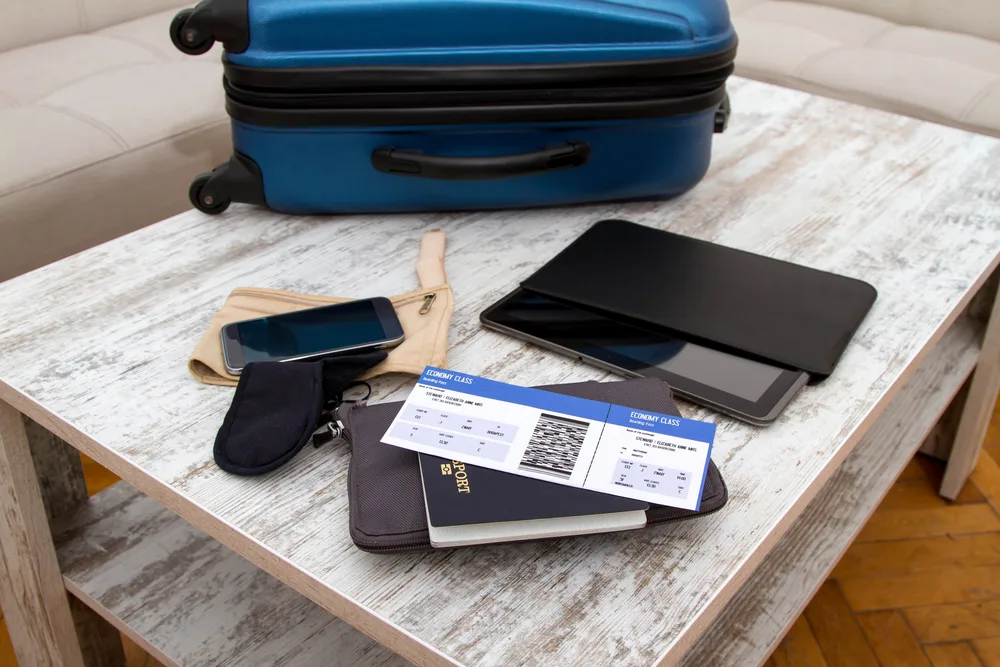
conejota/Shutterstock
Never, ever, ever, ever, ever (times infinity) put your travel documents in your checked baggage. Even those you don’t need to get through the airport should stay with you for the duration of your travel.
Documents include:
- Passport: You’ll need this handy for international flights at the counter and often again at the gate, as well as when you’re landing and need to fill out customs and immigration forms.
- Wallet: Even if you leave some of its contents behind, bring your wallet with an ID, credit cards, and cash. (Yes, bring your ID and passport, because you’ll need the former if the latter gets lost.)
- Luggage tags: Luggage tags are a great way to keep your personal identifying information visible and protect it from moisture. I use them even for my carry-on in case of mishap.
- Insurance information: If you bought travel insurance, keep those documents with you at all times.
Protection for Electronics
No one travels without electronics anymore, so plan to bring everything you need to communicate and have fun while you’re on vacation.
The most common items include:
- Devices: Make sure each device is with you in your carry-on or personal item, and that it has a protective case or cushioning where needed.
- Chargers: Put chargers together. My favorite strategy is to use a clear Ziploc bag.
- Games: Games for Nintendo Switch or other small devices should also get their own bag.
- Power banks: If you will be off the grid for a while or don’t want to rely on the airport to charge your devices, a power bank can help.
- VPN: This isn’t a piece of equipment, but rather a piece of software. It stands for virtual private network and, once installed on your laptop, protects your privacy even in the busiest of airport lounges.
Our favorite bags have small compartments that make stowing electronics easy. Speaking of which…
The Best Carry-on Bag Options
Looking for bags? We’ve got you covered. Feel free to check out our recommendations for the best:
You’d be surprised how much difference a good bag can make. With the right compartments, material, and airplane-appropriate sizing, your carry-on challenges will diminish significantly.
Frequently Asked Questions
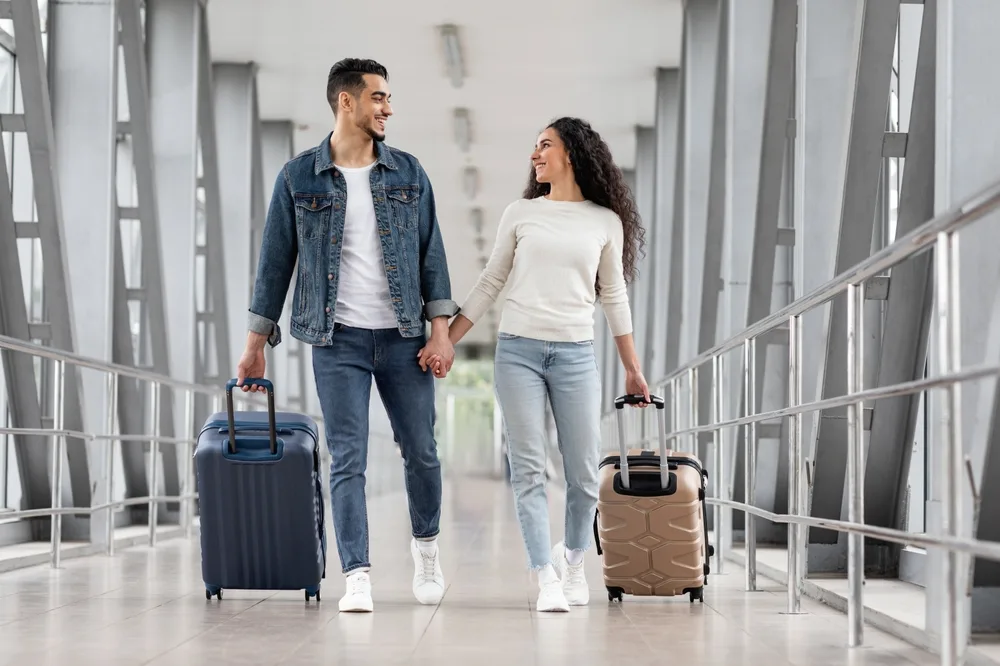
Prostock-studio/Shutterstock
Here are some more frequently asked questions about packing your carry-on.
How big can my carry-on be?
While there are no weight restrictions for carry-ons, the dimension restrictions are pretty… restricted. Usually airport staff don’t measure them or make you put them in those weird frames to prove they fit, but on full flights, they might – so know the dimensions.
“Carry-on bags shouldn’t be larger than 22 inches long, 14 inches wide and 9 inches high including handles and wheels,” says NerdWallet. “Dimensions of personal items should not exceed 18 inches long, 14 inches wide and 8 inches high.”
What should I do if my carry-on doesn’t fit?
If you can’t get your carry-on into the overhead luggage compartment, quickly take out any necessities you might need on the flight and then pass it to a flight attendant. They will check it for free.
What important rules apply to carry-ons?
Aside from size, most of the rules about carry-ons apply to what they can have in them. Check the Transportation Security Administration website to learn more about individual items and substances, such as alcohol, bowling pins, bread, and more.
Yes. Bread. TSA has things to say about bread.
How many carry-ons can I have?
You can have one carry-on bag and one personal item. There are no exceptions to this rule except for car seats for babies, which must fit into the seat – and you have to buy a ticket to get that seat.
Babies, toddlers, and children all get their own carry-ons and personal items, provided they have their own seats.
Can I access my carry-on in-flight?
Yes, your carry-on is accessible all during the flight. Provided you’re allowed to stand up (i.e. the fasten seatbelt sign is turned off), you can access it.
Grab That Carry-on and Go!
Now that you know how to pack your carry-on like a pro, it’s up and time to go! Let us know which of these tips works for you and if you have any of your own to add to our expert advice. Pip pip cheerio!



